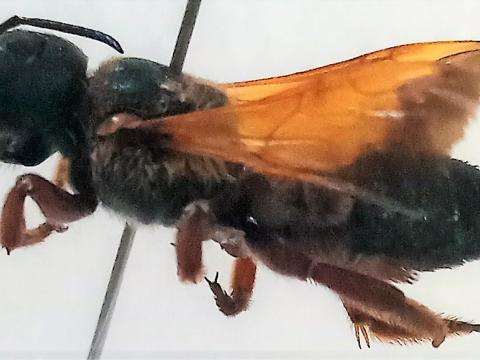Leafcutter bees are similar in size to honeybees or slightly larger and have large eyes. Most species are grey-black, black or deep brown in colour with wings bearing patches of orange, yellow or black. Unlike honeybees which carry pollen on their legs, female leafcutter bees carry pollen on hairs on the underside of the abdomen. When a bee is carrying pollen, the underside of the abdomen appears light yellow to deep gold in color. Leafcutter bees have large mandibles which they use to cut pieces of leaves. These leaf pieces are glued together by the bees and used to line the nests of their young. Nests are constructed in cavities within mud walls of houses, soil or rotting wood.
Leafcutter bees are solitary meaning they do not live in colonies like honeybees do. These bees obtain pollen from many wild plants and crops and in so doing pollinate these plants. A farmer is advised to conserve these bees by maintaining plants that the bees feed from. One such plant that grows commonly is Justicia flava. There is potential to domesticate certain species and deploy them to pollinate crops grown in greenhouses. This is already being done by some commercial growers in the Western hemisphere who use selected species of leafcutter bees to pollinate carrots, onions and blueberries. The picture below shows one species with orange wings tipped with black – this species is common in our farmlands and it nests in soil, cavities in walls. This particular species has been observed using its head to force open the tightly closed flowers of wild legumes species before it pollinates them. After the flower petals are open, other bees are able to access the pollen and/or nectar within.
